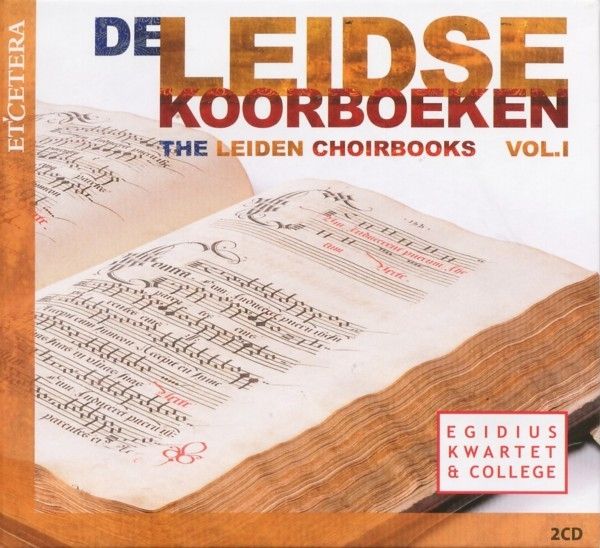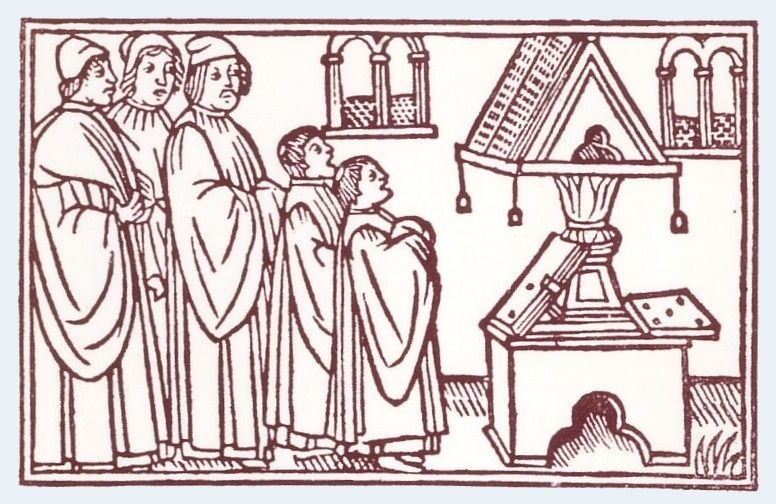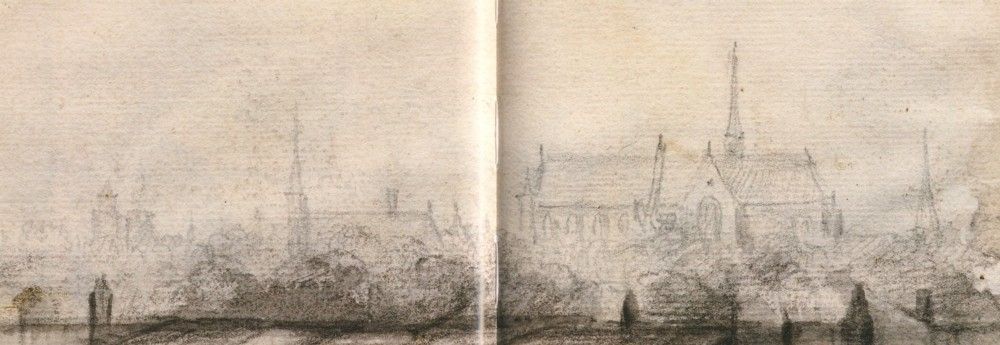
Et'cetera KTC 1410
2004
egidiuskwartet.nl

Et'cetera KTC 1410
2004
egidiuskwartet.nl
CD1
Thomas CRECQUILLON (c.1510-1557)
1. Memento salutis auctor - Maria mater [6:54]
5,6,7,8,9,11,2,14,3,4
BENEDICTUS [APPENZELLER] (c1485-c1558)
2. O magnum mysterium - Ave Maria [4:18]
1,2,3,4
Thomas CRECQUILLON
3. Recordare Domine - Propterea maestum [9:04]
1,9,14,13,3,17,4,19
Joachimus DE MONTE (fl.1550-1555)
4. Angelus Domini - Angelus Domini [4:55]
5,6,9,10,2,11,12,15,3,4
Thomas CRECQUILLON
5. Ave salutis ianua - mysterium mirabile [8:54]
9,10,1,11,2,14,3,4
Johannes CLEEFF (1528-1582)
6. Peccata mea - Quoniam iniquitatem [5:48]
1,2,3,4
Joachimus DE MONTE
7. Christus resurgens - Mortuus est enim [5:05]
5,6,9,10,2,11,12,15,3,4
Christian HOLLANDER (c.1510-c.1568)
8. Ego sum panis - Ego sum panis — Gloria
[6:56]
1,14,3,4,18
Thomas CRECQUILLON
9. Servus tuus - Declaratio sermonum [5:52]
1,2,3,4
Johannes RICHAFORT (c1480- c1547)
10. Ouem dicunt homines - Petre diligis me [5:58]
CD2
Nicolas GOMBERT (c.1495-c.1560)
Missa beati omnes
6,7,1,9,11,14,12,3,4
1. Kyrie [5:04]
2. Gloria [6:16]
3. Credo [10:22]
4. Sanctus [6:03]
5. Agnus dei (+16) [5:33]
(anoniem)
Missa Sancta Maria
9,10,2,11,12,13,14,17,3,4,19,20
6. Kyrie [4:27]
7. Gloria [4:16]
8. Credo [7:13]
9. Sanctus [8:10]

EGIDIUS KWARTET
1. Peter de Groot, altus
2. Jon Etxabe-Arzuaga, tenor
3. Hans Wijers, bariton
4. Donald Bentvelsen, bass
EGIDIUS COLLEGE
Superius
5. Barbara Borden
6. Susan Jonkers
7. Michaela Rimer
8. Keren Motseri
Altus
9. Hugo Naessens
10. Oscar Verhaar
Tenor
11. Christopher Kale
12. Robert Coupe
13. Stefan Berghammer
14. Matthew Vine
15. Guido Groenland
16. Lior Leibovici
Baritonans
17. Jasper Schweppe
Bassus
18. Hans Pootjes
19. Bas Ramselaar
20. Willem Ceuleers
artistic director: Peter de Groot
management: Marco van de Klundert
producer: Erik Beijer
sound engineer: Tom Dunnebier
recorded:
Laurentiuskerk, Mijnsheerenland, 18-23 januari 2010
Etcetera: Paul Janse
production Etcetera: Amienke Wytzes & Marcel van Tilburg

English liner notes
CHOIRBOOK I
This double CD, the first of what will eventually be a group of six,
contains a representative selection of works from the first choirbook,
officially described as ms. 1438 and in practice referred to as Codex
A. It was compiled in 1549, the year that Philip II, the son of Charles
V and the Netherlands' later coninck van Hispanien, made a tour
through the country to introduce himself to his future subjects.
Charles V was ill with severe gout and could not accompany him,
remaining in Brussels. Charles' famous staff of musicians did, however,
accompany Philip on his journey. The group's singing-master was one
Thomas Crecquillon; his compositions were much liked and found almost
everywhere, but his presence rather dominates the first Leiden
Choirbook with no less than eighteen compositions. It is tempting to
imagine whether the actual presence of Charles' choir had anything to
do with this. Between 26 and 30 September Philip II travelled from
Dordrecht to Haarlem via Rotterdam and The Hague. Crecquillon wrote
rich, highly ingenious, sonorous and solid compositions, with here and
there a characteristic melancholy timbre that, as tradition relates,
the Emperor much appreciated.
Besides Crecquillon, there is also a surprising number of compositions
by Joachimus de Monte, of whom we only know that he was employed as a
tenor in the Nieuwe Kerk in Delft during 1553-1154; it is also
possible, however, that he was employed by the Pieterskerk for some
time. Ten of his compositions have survived in the Leiden Choirbooks.
The timbre of de Monte's works is in complete contrast to
Crecquillon's; his compositions are light and simple in design and the
many Alleluias give them an infectiously festive character.
The choirbook is in two parts, the first and more extensive part
consisting of four-, five- and six-part motets. The Leiden singers also
called it the 'motet book'. The first composition that we come across
in the book is the motet Peccata mea domine by Johannes Cleef,
most likely from the German town of Cleves but who seems to have been
active in the Netherlands during the middle of the 16th century. One of
the most widespread motets of the 16th century, Johannes Richafort's Quem
dicunt homines, is also to be found in this first choirbook. It
found such a wide audience undoubtedly because its subject was St.
Peter and as a result was suited to all of the European churches that
bore his name; it is of course included on this CD. The second part of
the choirbook contains four masses. The first, the Missa beati omnes,
is by Nicolas Gombert, Charles V's master of music. He could well be
termed the godfather of the characteristic Habsburg polyphonic style
which was not only deep, rich and beautiful but also had endlessly
interwoven lines and themes. The last mass in the choirbook is an
anonymous Missa Sancta Maria in six parts; anonymous, however,
does not here mean of lesser quality. Quite the opposite in fact, for
this impressive and monumental masterpiece is a worthy and monumental
conclusion to the most splendid of the six Leiden choirbooks.
AFTERWORD
The singers of the Egidius Quartet have tried to render justice as
faithfully as possible to the repertoire and rituals of the Pieterskerk
in Leiden with this CD. For this reason, the quartet has combined with
a group of singers — the Egidius College — to create an
ensemble whose numbers match those of the College of the Seven
Liturgical Hours. The full assembly of between eight and twelve
singers, whether or not supplemented by choirboys, would clearly not
have always been used in the 16th century: the size of the singers'
group would vary according to the occasion and to the availability of
the singers. Various works on this CD are performed with one singer per
part, whilst others are performed with two. The parts for the choirboys
are here performed by two female soprano voices; there is of course a
practical reason for this, but it remains the only concession that we
have made — all the other choices that we have had to make are
the result of painstaking research. One example: we have orthographic
indications that Latin was pronounced with a French accent in the
Pieterskerk in Leiden, this being general practice in Netherland at
that time; we have also endeavoured to render the word-underlay of the
pieces as closely as possible according to the manuscript, also
including all the characteristic Leiden particularities such as words
and spellings that differ somewhat from those in the Bible. We have
made careful corrections only where it was clear that the copyist had
made what were obvious mistakes. There are various versions of several
motets that can be found elsewhere in other manuscripts that have
survived or in later prints that often contain different words and text
underlays and even different notes. Our intent, however, was to use the
Leiden versions at all times, so that we might have a better and more
honest idea of how this music must have sounded in the Pieterskerk in
Leiden.
Peter de Groot
translation: Peter Lockwood
